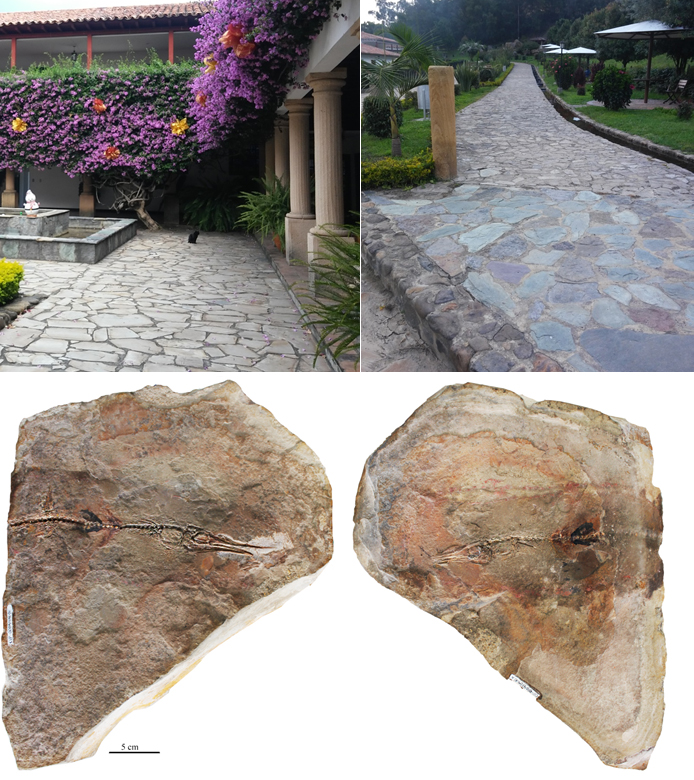by Oksana Vernygora & Javier Luque
The tropics are regarded as hot spot of biodiversity on land and in the water; yet the past of the tropical diversity has remained largely unexplored. During the last few decades our knowledge of the fossil record in tropical regions has increased considerably, thanks to a growing number of professionals and amateurs engaged in a collective effort of discovering its fossil record. However, we are just starting to unveil the richness of the fossil record in equatorial latitudes, and every new fossil finding adds to the pieces of the puzzle of the tropical diversity through time. Some of these discoveries occur while doing field work or visiting museum collections, but from time to time the discoveries occur in unexpected ways and places, as it was the case with a new fossil fish from the Cretaceous of Colombia.

About three years ago, a family of tourists with their 10-year-old son was on a tour in a region of Colombia famous for its colonial architecture. While visiting a local monastery known as La Candelaria, the boy noticed an unusual shape in one of the flagstones at the entrance of the monastery that reminded him of some extinct marine animals he knew existed a long time ago, so he decided to take a photo and share with the staff at the local Paleontological Research Center in Villa de Leyva: one of the most fossil-rich areas in northern South America. During a follow-up visit to the monastery they not only re-discovered the flagstone that captured the boy’s eye, but also found its counterpart in a separate slab eight meter apart. The slabs were removed and brought to the research center for preparation and study, but as the fossil started to reveal clues of its identity, the provenance of the flagstones and the quarry from where they were originally extracted remained unknown. In the winter of 2016 Mary Luz Parra, from the Paleontological Research Center, and Javier Luque, a PhD candidate at the University of Alberta, were able to contact the people who built the pathway in the monastery 15 years earlier and who also extracted the slabs from a nearby quarry. They helped the researchers track down the original quarry and discovered that the rocks in the quarry were identical in lithology and fossil content to the slabs preserving the fossil fish from La Candelaria. The fossil invertebrates include abundant crabs and ammonites that lived in the region during the lower Turonian (lowermost Upper Cretaceous, ~ 90 Mya), providing a geological context to the new fish. Later that year, Javier, my supervisor, Dr. Alison Murray, and myself joined forces and collaborated on the study of this new fossil discovery.

After a thorough examination of the specimen, we were able to establish that the fossil represented a new species and genus of the Aulopiformes distinct from all other members of the group known before. The fish species, named Candelarhynchus padillai, using a combination of words “Candelaria” (region where the fossil was found) and “rhynchus” – from the Greek word “rhynchos” which means “nose” or “snout”. Candelarhynchus was a slim, long-jawed, fine-toothed fish measuring 16 inches long. Superficially it resembled a modern-day needlefish, but, in fact, its closest living relatives are barracudas, grinners, and lizardfishes.

This is the first fossil of its kind discovered so far in northern South America, and despite being exposed in the pathway for over 15 years, the fossil shows a remarkable preservation of anatomical details. Since it’s two-dimensional, the fossil stayed preserved for years while dozens of visitors stepped on the walkway it was a part of.
This new find could provide some clues for how fish of this group adjusted to a changing environment, which could be useful to predict how today’s marine life will adapt to the changing climate.
So, our advice to everyone interested and fascinated by fossils, is to keep your eyes open and your mind ready for unexpected discoveries. Sometimes finding fossils is just a matter of looking at things with an inquiring mind.

To learn more: